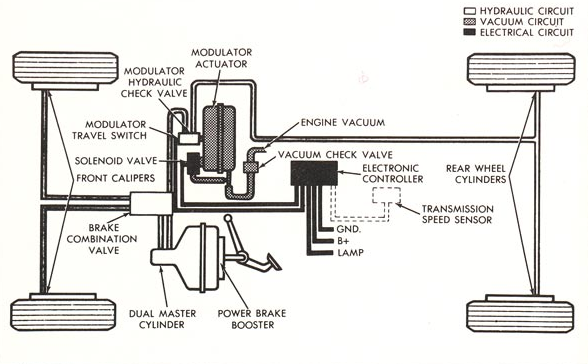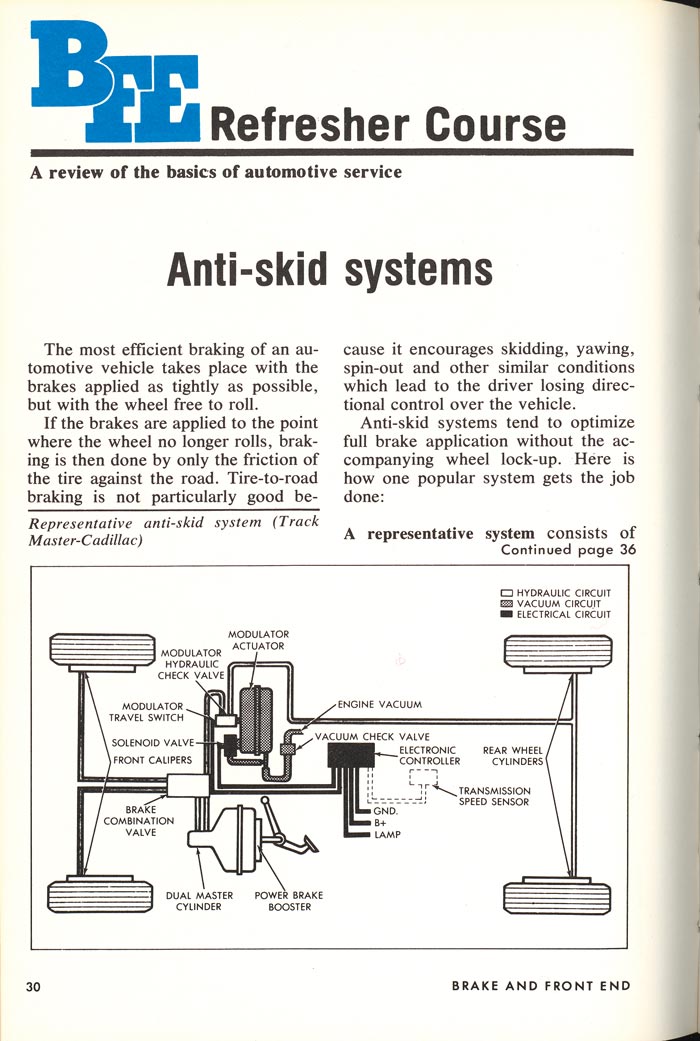Anti-SKID Brakes
During World War II, Dunlop developed an anti-lock brake system for high performance aircraft. It was a mechanical system designed to prevent wheel skids when planes landed at high speed on slick runways. In 1958, the first practical automotive ABS system, called Maxaret, was developed by the Road Research Laboratories in Great Britain and was installed on Jensen FF sports sedans in 1966, the Ferguson P99 race car, and an experimental all-wheel drive Ford Zodiac.
In 1969, the Lincoln Continental Mark III and the Ford Thunderbird were equipped with an Auto-Linear anti-lock unit developed by Kelsey-Hayes. Sensors on the rear wheels transmitted signals to an electronic module behind the glove box. The module controlled a vacuum- operated valve on the rear brake line to modulate pressure when anti-lock brake assist was needed.
GM developed a similar system for its Oldsmobile Tornado and Cadillac Eldorado models for 1970 as an option. These front-wheel-drive behemoths had most of the weight of the transmission and huge V8 over the front wheels. The biggest issue with these vehicles was the self-check after the vehicle started rolling.















